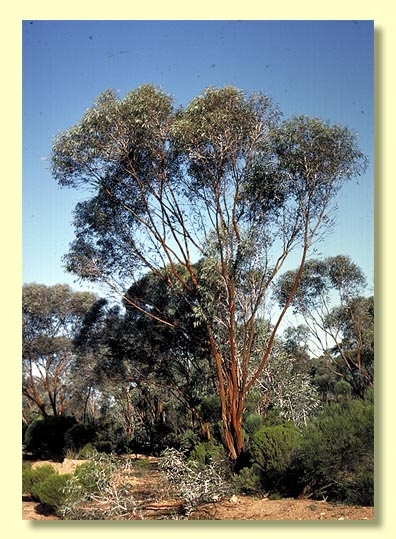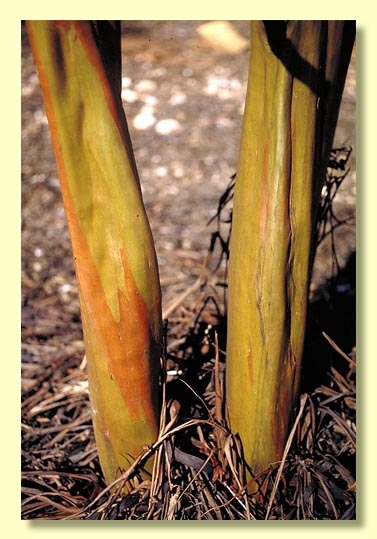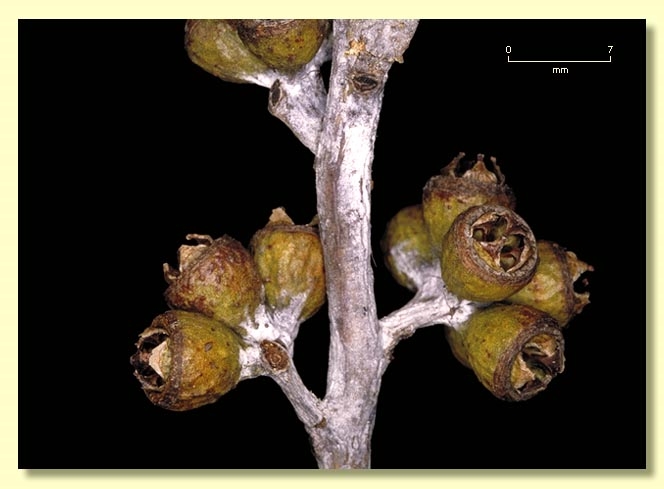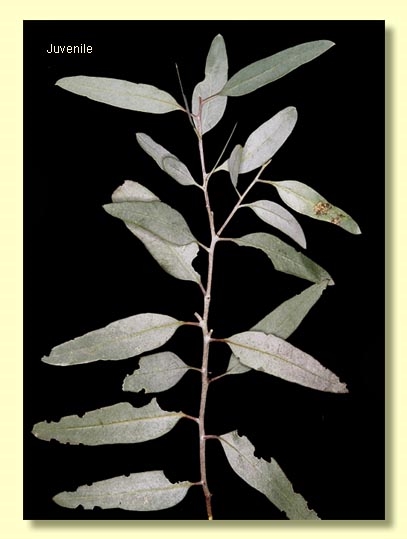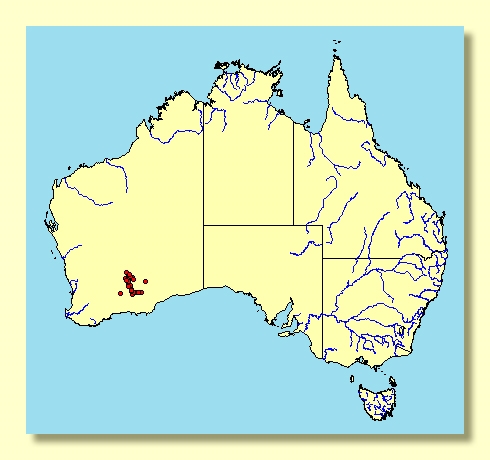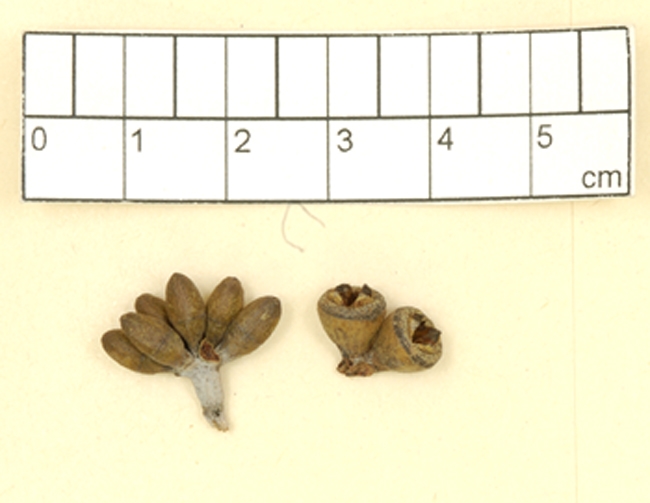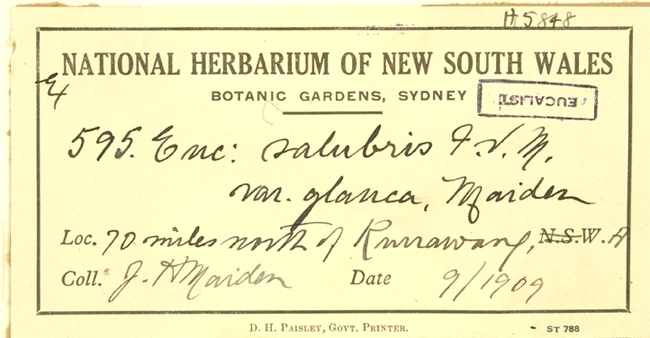Eucalyptus | Symphyomyrtus | Bisectae | Glandulosae | Contortae
Euclid - Online edition
Eucalyptus ravida
Mallet to 10 m tall, stems fluted. Non-lignotuberous.
Bark smooth throughout, shiny, greyish green over coppery to red-brown.
Branchlets copiously white waxy; oil glands present in the pith.
Juvenile growth (coppice or field seedlings to 50 cm): stems rounded in cross-section, glaucous except for the very base which will have started to develop adult bark; juvenile leaves always petiolate, opposite for ca 5 nodes then alternate, lanceolate, 5.5–9 cm long, 1.5–2.5 cm wide, dull, blue-green to gklaucous.
Adult leaves alternate, petioles 1–2.5 cm long; blade lanceolate to narrowly so, 5.8–13 cm long, 0.8–2.3 cm wide, base tapering to petiole, margin entire, apex acute, concolorous, dull, glaucous, but weathering glossy, green, side-veins at ca 45° to midrib, reticulation moderate, intramarginal vein more or less remote from margin, oil glands very irregular in outline, island.
Inflorescence axillary unbranched, peduncles flattened, 0.5–1.4 cm long, buds 7, usually shortly pedicellate (pedicels 0–0.2 cm long). Mature buds ovoid (0.8–1.3 cm long, 0.5–0.6 cm wide), glaucous at least on the pedicel and often on the hypanthium, scar present, operculum bluntly to acutely conical, all stamens inflexed but to varying degrees, anthers narrowly oblong, versatile, sub-basifixed, dehiscing by longitudinal slits, style long and straight, stigma blunt, locules 4, the placentae each with 6 vertical rows of ovules. Flowers white.
Fruit pedicellate or sessile (pedicels 0–0.1 cm long), obconical to hemispherical, 0.4–0.7 cm long, 0.6–1 cm wide, disc level to descending, valves 4, exserted prominently.
Seeds pale to dark brown, 1–2 mm long, ovoid or flattened-ovoid sometimes polygonal in outline, dorsal surface deeply, narrowly and closely fissured, margin ragged, hilum ventral. (Seedcoat often referred to as being honey-combed.)
Cultivated seedlings (measured at ca node 10): cotyledons Y-shaped (bisected); stems squared to rounded in cross-section, slightly warty, slightly waxy; leaves always petiolate, opposite for ca 5 to 7 nodes then alternate, lanceolate, 5.5–7.5 cm long, 1.3–2.5 cm wide, grey-green with a slight waxy bloom..
Flowering has been recorded in March, May, November and December.
A small mallet, endemic to the central goldfields of Western Australia, from Callion in the north, south to Norseman and east to Zanthus. Sites are usually hard, red-soiled, seasonally damp flats. The stems are smooth, brown, greenish or coppery below while the upper stems and branchlets are strongly glaucous. The adult leaves are at first glaucous and mature glossy green, while the whole crown seen from a distance is olive green. Buds and fruits are slightly glaucous or non-glaucous and occur in sevens on prominently flattened peduncles.
Eucalyptus ravida belongs in Eucalyptus subgenus Symphyomyrtus section Bisectae subsection Glandulosae because the buds have two opercula, the cotyledons are bisected and the branchlets have numerous oil glands in the pith. Within this subsection E. ravida belongs to a small group, the gimlets (series Contortae), notable for the slender, fluted, twisted, shiny colourful trunks. The gimlets are further recognised by very irregular island oil glands in the leaves and irregularly and deeply fissured seed-coats. The other gimlet species (series Contortae) are E. campaspe, E. creta, E. diptera, E. effusa, E. salubris, E. terebra and E. tortilis.
The waxy branchlets of E. ravida distinguish it from all other gimlets except E. campaspe, a species with larger and copiously waxy buds and fruit and crown more silvery glaucous in appearance. The buds and fruit of E. ravida are usually non-glaucous but the pedicels, peduncles and branchlets usually are glaucous.
At the base of Jimberlana Hill near Norseman there is a population of gimlets with morphology somewhat intermediate between E. terebra and E. ravida. The name Eucalyptus jimberlanica was applied to these in 1991, but it is not recognised in EUCLID as we are not convinced it is a distinct species.

